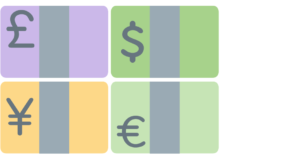2025 is turning into a very strong year for global equity markets. They continued their good run through September. The MSCI World Index (hedged into AUD) returned 3.3% for the month and has gained 15% calendar year-to-date.

USA
The S&P500 performed strongly, returning 3.7%. Sentiment remains high in companies linked to AI, with large cap technology stocks performing particularly well. There were broad gains across US markets, with the Russell 2000 index returning more than 3%.
Some measures of labour market strength pointed to signs of weakening and follows a downward revision in the number of jobs added to the US economy in the previous 12 months, as reported by the Bureau of Labor Statistics. The US economy demonstrated remarkable resilience however, with GDP figures released in September pointing to 3.8% annual GDP growth. The positive surprise to growth was supported by continued resilience in consumer spending.

Asia
In Asia, major equity markets (Taiwan, China and South Korea) posted near-double-digit returns over September. The semiconductor industry was likely key for Taiwanese and Korean equity markets in particular.

Australia
Australian equity market performance was mildly negative over September (-0.7%). Australian equities have now underperformed hedged Developed Market equities by nearly 7% on a rolling 12 month basis. Losses were worst in the Energy Sector which returned -9.1%. The Materials sector was positive however, returning 6.5%.
At its September meeting, the Reserve Bank of Australia (RBA) decided to leave the cash rate unchanged at 3.6%. In its decision, it noted that private demand has recovered more than expected and that there is still some tightness in the labour market. Given this, and despite inflation having returned to target in the June quarter, the RBA considered some signs of persistent inflation as a good reason to leave the cash rate unchanged.

Currency and bonds
Australian Bonds were effectively flat over the month, whilst global bonds performed strongly, returning 0.1% and 0.7% respectively. US bonds in particular, likely responded to weaker labour market data that was released earlier in the month, along with expectations for more rate cuts from the US Federal Reserve. Australian 10 year yields rose very slightly, by 2bps to end September at 4.30%. US 10-year yields ended September at 4.15% (falling 8bps).
Despite some volatility through September for the USD, it ended the month close to flat against a number of major trading partners’ currencies. The AUD finished marginally higher vs the USD, rising 1.3%. Performance of the AUD (relative to the USD) has been much more muted in recent months, following a period of heightened volatility in late 2024 and in the period surrounding Liberation Day.


